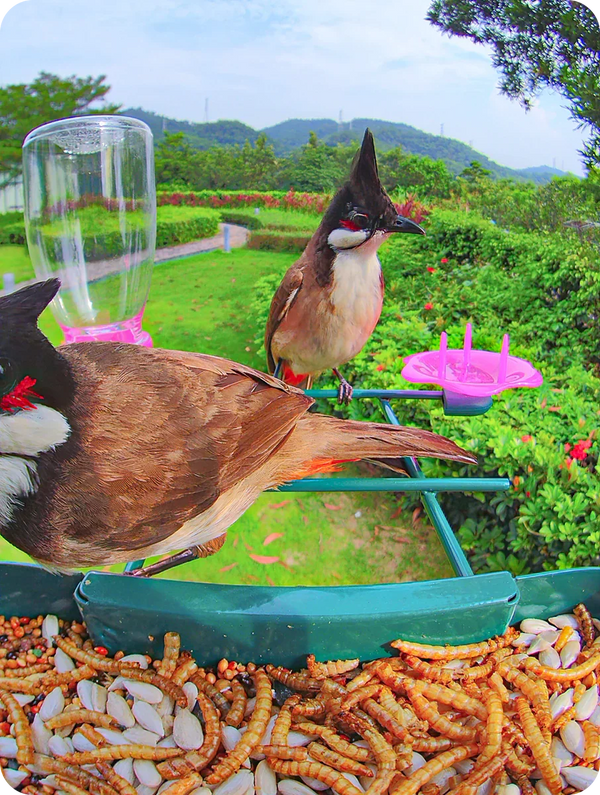Unlock the Secrets of Tiny Winged Beauties: Discover the Birds in Your Backyard!
Identifying small birds in your backyard is not just a delightful pastime; it plays a crucial role in understanding and maintaining the ecosystem. These charming creatures contribute to pollination, seed dispersal, and even pest control, making them invaluable allies in our gardens. For avid birdwatchers and gardening enthusiasts alike, spotting and identifying these tiny winged beauties can be an enriching experience that enhances our appreciation of nature.

Birdwatching opens a window to the vibrant world of avian life, bringing joy and tranquility to our daily routines. Whether you’re sipping coffee on your porch or tending to your plants, the sight of a small bird flitting about can bring a smile to your face. In this article, we will delve into the characteristics of small birds, highlight common species you may encounter in your backyard, share tips for effective bird identification, and offer ways to create a bird-friendly environment that will encourage these delightful visitors to make your space their home.
Understanding Small Birds
Small birds typically measure less than 6 inches in length, with some of the tiniest species barely reaching 3 inches. These birds are characterized by their agile flight, vibrant colors, and, often, unique songs that can brighten up any garden. Unlike their larger counterparts, small birds usually have fast metabolisms, requiring them to feed frequently throughout the day. They inhabit a variety of environments, from dense forests to open grasslands, but many species thrive in suburban and urban areas, making them accessible to the casual observer.
Common behaviors of small birds include foraging for seeds, insects, and fruits, often seen darting between branches or hopping along the ground. Their social structures can vary; some prefer to forage in flocks, while others are more solitary. Observing their interactions can provide insight into their species and habits. Understanding these characteristics not only helps with identification but also enriches the experience of watching these fascinating creatures.
Common Small Birds in Backyards
Many small bird species are frequent visitors to backyards, each with its unique features and behaviors. The American Goldfinch, easily recognizable by its bright yellow plumage and black cap, loves sunflower seeds and can often be seen hanging upside down to reach them. The House Finch, with its warm reddish-brown coloring, is another common sight, known for its cheerful song and adaptability to urban environments.
The Chickadee, with its distinctive black-capped head and white cheeks, is a curious little bird that often approaches humans without fear. Its sweet "chick-a-dee-dee-dee" call is a sure sign that it’s nearby. If you're fortunate, you may spot a Ruby-throated Hummingbird, whose iridescent feathers sparkle in the sunlight as it flits from flower to flower, feeding on nectar. Each of these birds brings a unique charm to the backyard, enriching the ecosystem and providing endless joy to observers.
Observing their feeding habits can reveal much about their preferences; for instance, many small birds are seed eaters, while others may prefer insects or nectar. Keeping an eye out for their distinctive calls and behaviors can aid in identification and enhance your birdwatching experience.
Bird Identification Tips
Identifying small birds can be both exciting and challenging. Start by paying attention to their colors, shapes, and sizes. Keep a notebook handy to jot down your observations, as this will help you remember the unique characteristics of each bird. Look for distinctive markings on their wings, heads, or tails, which can be key identifiers.
Utilizing resources like field guides or bird identification apps can greatly enhance your efforts. Many apps offer audio samples of bird songs, allowing you to match what you hear with what you see. Additionally, consider joining local birdwatching groups or forums where you can share your experiences and learn from seasoned birders. The camaraderie and shared knowledge can make birdwatching an even more rewarding hobby.
Creating a Bird-Friendly Environment
Creating a welcoming space for small birds in your backyard is easier than you might think. Start by incorporating native plants into your landscaping, as these species provide essential food and shelter for local birds. Berry-producing bushes, such as elderberry or serviceberry, can attract various small birds, while flowering plants draw in hummingbirds and other pollinators.
Moreover, placing bird feeders stocked with seeds or suet can create a reliable food source. Additionally, providing a clean water source, such as a birdbath, not only quenches their thirst but also offers a place for them to bathe and preen. By taking these simple steps, you can transform your backyard into a haven for small birds, allowing you to enjoy their presence throughout the seasons.
Embrace Birdwatching as a Fulfilling Hobby
Identifying small birds in your backyard is a joyful and fulfilling endeavor that fosters a deeper connection with nature. By recognizing their unique characteristics, familiarizing yourself with common species, and creating a bird-friendly environment, you can enjoy the myriad benefits these tiny creatures bring to your life and garden. Birdwatching is not only a hobby but a wonderful way to engage with the environment and contribute to local biodiversity.
We encourage you to take up the binoculars, step outside, and immerse yourself in the captivating world of small birds. Share your experiences and discoveries with friends and family; you may inspire others to appreciate these winged wonders as you have. Happy birdwatching!








